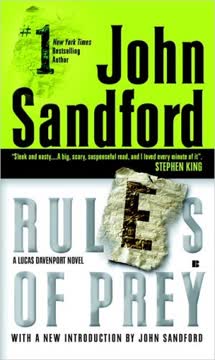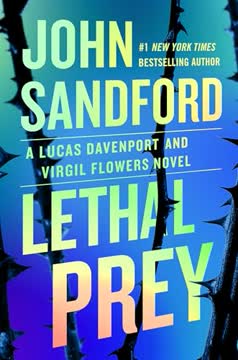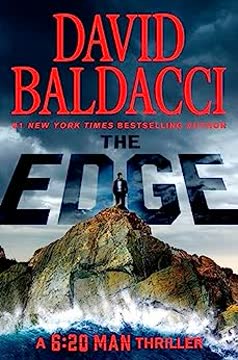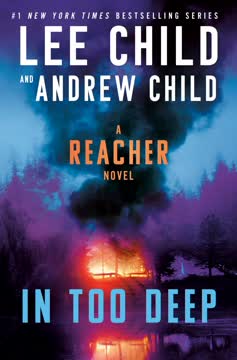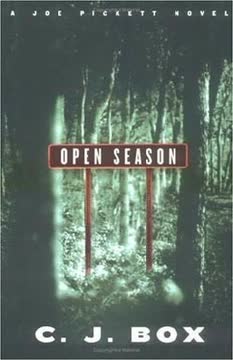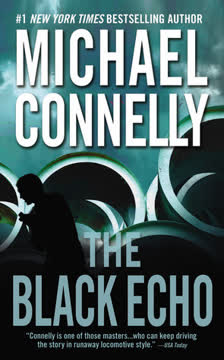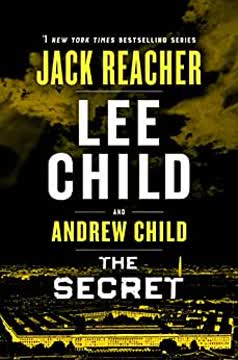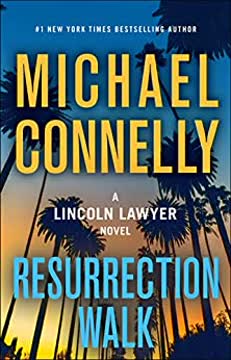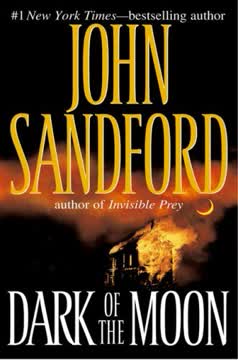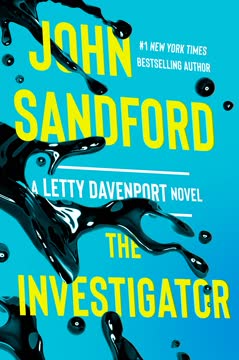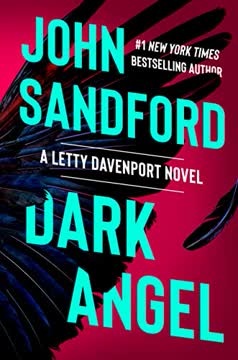Plot Summary
The Maddog's Lethal Obsession
The maddog, a meticulous and intelligent killer, thrives on the thrill of the hunt, targeting women to satisfy his twisted need for power and control. His latest victim, an artist, narrowly escapes, leaving him frustrated but undeterred. The maddog's history of violence is marked by meticulously planned and executed murders, each adhering to his self-imposed rules. His obsession with perfection and evasion of capture fuels his dark desires, as he prepares for his next move, determined to maintain his deadly game.
Lucas Davenport's Unyielding Pursuit
Lucas Davenport, a brilliant and unconventional detective, is tasked with capturing the maddog killer. Known for his unorthodox methods and sharp instincts, Davenport navigates the complexities of the case, piecing together clues and patterns. Despite the pressure from the media and the public, he remains focused on the hunt, determined to outsmart the killer. Davenport's personal life intertwines with his work, adding layers to his character as he balances the demands of the case with his own moral compass.
A Killer's Rules and Games
The maddog operates by a strict set of rules designed to keep him undetected. He never kills anyone he knows, avoids motives, and leaves no physical evidence. His fascination with games and strategy mirrors his approach to murder, viewing each kill as a move in a larger game against the police. The maddog's intelligence and planning make him a formidable adversary, as he continues to evade capture while taunting the authorities with his cryptic notes.
The Wrong Suspect's Ordeal
The police arrest Jimmy Smithe, a gay welfare worker, as the prime suspect in the maddog case. Despite the mounting evidence against him, Davenport doubts Smithe's guilt, believing the real killer is still at large. Smithe's life is turned upside down as he faces public scrutiny and the threat of imprisonment. Davenport's instincts lead him to question the evidence, pushing him to find the truth and prevent a miscarriage of justice.
A Dangerous Game of Deception
The maddog, angered by the police's mistake, contacts Davenport directly, revealing his knowledge of the investigation and taunting the detective with his continued freedom. This bold move confirms Davenport's suspicions about Smithe's innocence and reignites his determination to catch the real killer. The phone call serves as a turning point, intensifying the psychological battle between the detective and the maddog, as each tries to outwit the other.
The Maddog's Calculated Escape Plan
The maddog, aware of the police surveillance, devises a plan to slip away unnoticed. He exploits the layout of a law office building to evade his watchers, using an internal elevator to exit on a different floor. This clever ruse allows him to disappear for a crucial two hours, during which he prepares for his next move. The maddog's ability to outsmart the police highlights his intelligence and adaptability, setting the stage for a final confrontation.
Lucas Davenport's Desperate Pursuit
Lucas Davenport, realizing the maddog's escape, races against time to prevent another murder. He pieces together the killer's intentions, suspecting that Carla Ruiz is the next target. Davenport's urgency and determination drive him to push the limits, both physically and mentally, as he navigates the complexities of the case. His relentless pursuit underscores his commitment to justice and his personal connection to the victims.
A Deadly Game of Deception
The maddog uses deception to his advantage, creating a false sense of security for the police. He plants misleading evidence and exploits the weaknesses in the surveillance, all while planning his next attack. This chapter delves into the psychological warfare between the maddog and Davenport, as each tries to outwit the other. The tension builds as the killer's true intentions become clear, leading to a high-stakes showdown.
The Maddog's Final Stand
The maddog, cornered and desperate, makes a final stand against Davenport. The final confrontation is intense and brutal, with both men pushing their limits. The maddog's arrogance and overconfidence ultimately lead to his downfall, as Davenport's quick thinking and determination prevail. This climactic moment serves as a turning point, bringing the maddog's reign of terror to an end and highlighting the consequences of his actions.
The Maddog's Last Mistake
The maddog's overconfidence and miscalculations lead to his ultimate downfall. His inability to anticipate Davenport's moves and his underestimation of the detective's resolve prove to be his undoing. This chapter highlights the maddog's psychological unraveling, as his carefully constructed facade crumbles under pressure. The final confrontation serves as a cautionary tale about the dangers of hubris and the inevitability of justice.
Characters
Lucas Davenport
Lucas Davenport is a complex character, known for his intelligence and unorthodox methods. He is deeply committed to solving the maddog case, driven by a sense of justice and a personal connection to the victims. Davenport's ability to think like the killer makes him a formidable opponent, but his personal life and moral dilemmas add depth to his character, making him relatable and human.
The Maddog
The maddog is a chilling antagonist, driven by a need for power and control. His strict adherence to his own rules and his fascination with games make him a unique and terrifying figure. The maddog's intelligence and planning allow him to evade capture, while his taunting of the police adds a psychological dimension to his crimes. His character is a study in the dark side of human nature, exploring themes of obsession and madness.
Jimmy Smithe
Jimmy Smithe is a welfare worker wrongfully accused of being the maddog killer. His life is turned upside down as he faces public scrutiny and the threat of imprisonment. Smithe's character highlights the dangers of jumping to conclusions and the impact of false accusations. His ordeal adds tension to the narrative, as Davenport works to clear his name and find the real killer.
Carla Ruiz
Carla Ruiz is a key figure in the investigation, having survived an attack by the maddog. Her character adds a personal dimension to the case, as she grapples with fear and the aftermath of her encounter. Ruiz's relationship with Davenport provides insight into his character, as he balances his professional duties with personal connections.
Jennifer Carey
Jennifer Carey is a television reporter who becomes entangled in the maddog case. Her pursuit of the story and her relationship with Davenport add complexity to the narrative, highlighting the tension between the media and law enforcement. Carey's character explores themes of ambition and ethics, as she navigates the challenges of her profession.
Plot Devices
The Maddog's Rules
The maddog's rules are a central plot device, guiding his actions and keeping him undetected. These rules add a layer of complexity to the narrative, as Davenport works to understand and anticipate the killer's moves. The rules also serve as a psychological insight into the maddog's character, revealing his need for control and his strategic mindset.
The Phone Call
The maddog's call to Davenport is a pivotal moment in the story, confirming the detective's suspicions and reigniting his determination to catch the killer. This plot device heightens the tension between the two characters, as the maddog taunts Davenport with his continued freedom. The phone call serves as a catalyst for the unfolding events, driving the narrative forward.
The Wrongful Arrest
The arrest of Jimmy Smithe is a significant plot device, highlighting the dangers of jumping to conclusions and the impact of false accusations. This event adds tension to the narrative, as Davenport works to clear Smithe's name and find the real killer. The wrongful arrest also serves as a commentary on the justice system, exploring themes of truth and justice.
The Final Confrontation
The final confrontation between Davenport and the maddog is a pivotal moment in the story, serving as the culmination of their psychological battle. This plot device heightens the tension and stakes, as both characters push their limits in a fight for survival. The confrontation ultimately leads to the maddog's downfall, bringing the narrative to a satisfying conclusion.
Analysis
"Rules of Prey" by John Sandford delves into the psychological complexities of both hunter and hunted, exploring themes of justice, obsession, and the human psyche's darker corners. Through the cat-and-mouse game between Lucas Davenport and the maddog, the narrative examines the fine line between order and chaos, and the lengths to which individuals will go to achieve their goals. The book serves as a commentary on the nature of evil and the relentless pursuit of justice, highlighting the moral dilemmas faced by those who stand against darkness. Sandford's storytelling captivates with its intricate plot and deep character studies, offering readers a thrilling and thought-provoking journey.
Last updated:
FAQ
0. Synopsis & Basic Details
What is Rules of Prey about?
- A Psychological Cat-and-Mouse: Rules of Prey introduces Lucas Davenport, a brilliant but unconventional Minneapolis detective, as he hunts a meticulous serial killer known as "the maddog." The killer, a seemingly ordinary lawyer named Louis Vullion, operates by a strict set of self-imposed rules, viewing his murders as an elaborate game against the police.
- The Hunter and the Hunted: The narrative follows Davenport's relentless pursuit, complicated by media pressure, a wrongful arrest, and the maddog's taunting communications. It delves into the psychological warfare between the two men, as Davenport attempts to understand the killer's twisted logic and anticipate his next move.
- A City Under Siege: As the body count rises, the Twin Cities are gripped by fear. The story explores the impact of the crimes on the community, the media's role in sensationalizing the events, and the personal toll the investigation takes on Davenport and those around him, leading to a climactic and morally ambiguous confrontation.
Why should I read Rules of Prey?
- Masterclass in Suspense: John Sandford crafts a taut, psychological thriller that keeps readers on edge, constantly questioning the killer's next move and Davenport's unconventional tactics. The intricate plotting and high stakes make it a compelling read for fans of crime fiction.
- Complex Character Study: Beyond the thrilling plot, the novel offers deep dives into the minds of both the detective and the killer. Lucas Davenport is a morally ambiguous protagonist whose brilliance is matched only by his personal flaws, while the maddog is a chillingly intelligent antagonist, making for a fascinating exploration of good versus evil.
- Pioneering the "Prey" Series: This is the foundational novel for John Sandford's highly acclaimed "Prey" series, introducing readers to Lucas Davenport and setting the tone for future installments. It's an essential read for anyone looking to understand the origins of one of crime fiction's most iconic characters.
What is the background of Rules of Prey?
- Setting the Stage in the Twin Cities: The novel is deeply rooted in the urban landscape of Minneapolis and St. Paul, utilizing specific landmarks like City Hall, Lake Nokomis, and Hennepin Avenue. This grounded setting adds a layer of realism and immediacy to the unfolding terror, making the crimes feel particularly invasive to the local community.
- Early 90s Technological Context: Published in 1989, the story reflects the technology of its time, with VCRs for taping news, pay phones for anonymous calls, and early computer databases for police work. This period detail subtly influences the plot, particularly in how information is gathered, disseminated, and how the killer attempts to evade detection.
- Exploration of Media Ethics: A significant subplot involves the intense media coverage of the serial killer, highlighting the competitive nature of news reporting and the ethical dilemmas faced by journalists. The tension between law enforcement's need for discretion and the media's drive for sensationalism is a recurring theme, reflecting contemporary debates about crime reporting.
What are the most memorable quotes in Rules of Prey?
- "Never kill anyone you know. Never have a motive. Never follow a discernible pattern.": These are the maddog's chilling rules, meticulously snipped from newspapers and left at crime scenes. This quote defines the killer's methodical, game-like approach to murder, highlighting his intellectual arrogance and his desire to challenge the police. It's central to understanding the maddog's character and the psychological game he plays.
- "Sometimes it gets very close to pain.": Uttered by Jennifer Carey to Lucas Davenport after a particularly intense sexual encounter, this line reveals a deeper psychological complexity in their relationship and in Davenport himself. It hints at the fine line between pleasure and pain, control and surrender, that both characters, in their own ways, navigate, echoing the maddog's sadistic tendencies.
- "When you're the squirrel.": Lucas Davenport delivers this stark warning to Carla Ruiz when teaching her to shoot, emphasizing the brutal reality of self-defense. This quote encapsulates the novel's gritty realism and Davenport's pragmatic, often cynical, view of violence. It underscores the vulnerability of victims and the ultimate stakes in the fight for survival.
What writing style, narrative choices, and literary techniques does John Sandford use?
- Lean, Propulsive Prose: Sandford employs a direct, unadorned writing style that keeps the narrative moving at a relentless pace. His sentences are often short and impactful, creating a sense of urgency and tension that mirrors the high-stakes investigation. This style ensures that Rules of Prey is a page-turner, focusing on action and psychological insight over elaborate descriptions.
- Dual Perspective & Psychological Depth: A key narrative choice is the alternating perspective between Lucas Davenport and the maddog. This allows readers intimate access to both the hunter's deductive process and the killer's twisted internal world, building suspense and offering a profound psychological study of obsession and control. This technique enhances the cat-and-mouse dynamic, making the reader privy to both sides of the deadly game.
- Subtle Foreshadowing and Symbolism: Sandford masterfully uses subtle details and recurring motifs to enrich the narrative. From the maddog's childhood ground squirrel killings foreshadowing his adult sadism to the recurring imagery of games and rules, the author weaves in symbolic elements that deepen the thematic resonance without overtly stating them. This encourages readers to look beyond the surface plot for hidden meanings and connections.
1. Hidden Details & Subtle Connections
What are some minor details that add significant meaning?
- The Maddog's "Red Worm" Lips: Early in Chapter 1, the maddog recalls a ranch girl saying he had "lips like red worms." This seemingly throwaway insult from his youth is a deep-seated trigger for his first, non-Chosen murder, revealing the profound impact of perceived slights on his developing pathology and his long-held grudges. It underscores his fragile ego and the personal, almost petty, origins of his violence.
- Lucas's Chipped Incisor: Lucas's chipped upper incisor, which he never had capped, is a small physical detail that subtly communicates his rugged, unpolished nature and perhaps a disregard for superficial perfection. It contrasts with the maddog's meticulousness and hints at Davenport's willingness to embrace imperfections, both in himself and in the messy reality of police work.
- The "Slicers" in Everwhen: In Chapter 5, Lucas describes creatures called "slicers" in his game Everwhen as "a cross between a bat and a razor-edged plate of glass." This fantastical detail subtly foreshadows the maddog's method of killing—stabbing with a sharp, thin blade—and the almost invisible, predatory nature of his attacks, linking Lucas's creative mind to the grim reality of his hunt.
What are some subtle foreshadowing and callbacks?
- The "Wolverine" Smile: Early in Chapter 2, Jennifer Carey describes Lucas's smile as like a "wolverine," a predatory animal. This foreshadows Lucas's capacity for ruthlessness and aggression, particularly evident in his interrogation tactics and the violent confrontation at McGowan's house, revealing a darker, more primal side beneath his charming exterior. It's a callback to his ability to intimidate and dominate when necessary.
- Carla's Self-Defense Training: Carla Ruiz mentions in Chapter 5 that her ex-husband's father, a policeman, taught her "some self-defense things," including stamping on an instep. This seemingly minor detail directly explains how she managed to fight off the maddog, turning a potential victim into a survivor and highlighting the practical application of seemingly innocuous knowledge.
- The Maddog's "Unconsummated Interests": During Lucas's search of Vullion's apartment in Chapter 27, he notes an "unused" electronic keyboard and an "inexpensive weight bench with a set of amateur weights" that appeared "practically untouched." This subtly foreshadows Vullion's superficial engagement with hobbies and his inability to commit to anything beyond his murderous obsession, revealing a hollow core beneath his intellectual facade.
What are some unexpected character connections?
- Vullion's Connection to Larry Rice's Will: The most unexpected connection is Vullion's role as the attorney handling Larry Rice's will, the very man from whom the maddog's gun was sold. This detail, uncovered late in the investigation, provides a crucial, albeit indirect, link between Vullion and the murder weapon, demonstrating the maddog's proximity to the evidence and his calculated risk-taking. It's a subtle twist that reveals the killer's deep integration into the fabric of the city.
- Carla Ruiz and Lucas's Cabin: The offer and subsequent stay of Carla Ruiz at Lucas's secluded cabin creates an unexpected personal connection between the detective and a victim. This shared space, initially for her safety, evolves into a romantic interlude, blurring the professional lines and adding a layer of emotional complexity to Lucas's character and his commitment to the case.
- The Maddog's Recognition of Lucas in the Courthouse: In Chapter 15, the maddog recognizes Lucas in the clerk's office, noting his "easy way about him" and envying it. This brief, unacknowledged encounter highlights the maddog's acute observational skills and his underlying insecurity, revealing his awareness of his adversary long before Lucas fully identifies him. It's a subtle moment of mutual recognition that deepens their psychological battle.
Who are the most significant supporting characters?
- Elle Kruger (Sister Mary Joseph): Lucas's childhood friend and now a psychology professor and nun, Elle serves as his intellectual and moral sounding board. Her insights into the maddog's psychology, particularly his sadistic nature and fixation on "Chosen" victims, are crucial to the investigation. She represents a spiritual and academic counterpoint to Lucas's street-level pragmatism, offering a unique perspective on the killer's motivations and the nature of evil.
- Harmon Anderson: The rail-thin, grammatically challenged assistant chief of homicide, Anderson is Lucas's primary liaison with the official police investigation. Despite his rough exterior and cynical demeanor, he is highly competent, with a better clearance rate than anyone else in the department, and a surprising talent for computer management programs. He embodies the diligent, often unsung, work of traditional police procedure, contrasting with Lucas's maverick style.
- Annie McGowan: The ambitious Channel Eight reporter, McGowan becomes a pawn in Lucas's game to draw out the maddog. Her sensationalist reporting and willingness to exploit personal details for a scoop highlight the ethical complexities of media coverage in a high-profile case. Her character serves as a mirror to Jennifer Carey, showcasing different facets of journalistic ambition and the impact of media on public perception and the investigation itself.
2. Psychological, Emotional, & Relational Analysis
What are some unspoken motivations of the characters?
- The Maddog's Quest for Recognition: Beyond the stated "game" and "pleasure," the maddog's deep-seated motivation is a desperate craving for recognition and validation, stemming from a childhood of being "a social nonentity" and overshadowed by his father. His meticulous rules and taunting notes are not just about evading capture, but about forcing the world, and specifically Lucas Davenport, to acknowledge his intelligence and power, as seen in his rage when called a "pig farmer" by the media.
- Lucas's Need for Control and Order: Lucas's intense drive to solve cases, particularly this one, is rooted in a profound need to impose order on chaos. His personal life, marked by a string of relationships and a reluctance to commit, suggests a fear of losing control, which he compensates for by mastering the unpredictable world of crime. His "wolverine" smile and aggressive tactics are manifestations of this underlying need to dominate and control situations, especially when faced with a killer who thrives on chaos.
- Jennifer Carey's Search for Meaning: Jennifer's ambition as a reporter and her sudden decision to have a baby, even without marriage, hint at an unspoken search for meaning and legacy beyond her professional achievements. Her competitive drive and willingness to push ethical boundaries in reporting are intertwined with a deeper emotional vulnerability, suggesting a desire for something more substantial than fleeting news cycles, as revealed in her confession of feeling "all caved in."
What psychological complexities do the characters exhibit?
- The Maddog's Narcissistic Sadism: The maddog exhibits classic traits of narcissistic personality disorder combined with sadism. His killings are not merely sexual but acts of intellectual and emotional domination, where the victim's terror and his own orgasm are intertwined with a sense of profound power. His meticulous planning and self-imposed "rules" are a manifestation of his need for absolute control, while his rage at being called "impotent" or a "pig farmer" reveals a fragile ego beneath the facade of intellectual superiority.
- Lucas Davenport's Moral Ambiguity: Lucas operates in a morally gray area, often bending or breaking rules to achieve justice. His willingness to manipulate the media (Jennifer and Annie), use violence (Bald Peterson, Cochrane), and even set "bait" (McGowan) demonstrates a utilitarian ethic where the end justifies the means. This complexity makes him a compelling, yet sometimes unsettling, protagonist, constantly grappling with the personal cost of his methods, as seen in his internal conflict after the "Fuckup."
- Carla Ruiz's Post-Traumatic Resilience: Carla's journey from victim to empowered survivor showcases significant psychological resilience. Initially traumatized and withdrawn, her decision to learn self-defense and her willingness to act as bait for the killer demonstrate a profound shift from passive victimhood to active agency. Her emotional vulnerability, coupled with her artistic sensibility, highlights the human capacity to process trauma and find strength, even amidst lingering fear and nightmares.
What are the major emotional turning points?
- Carla Ruiz's Fight for Survival: The moment Carla Ruiz fights off the maddog in Chapter 1 is a critical emotional turning point, not just for her, but for the entire narrative. Her unexpected resistance shatters the maddog's carefully constructed sense of control and invincibility, fueling his rage and setting the stage for his subsequent, more brutal killings. For Carla, it's the genesis of her resilience and her eventual willingness to confront her attacker.
- The Maddog's Taunting Phone Call to Lucas: In Chapter 11, the maddog's direct phone call to Lucas, quoting his own rules and expressing anger over Smithe's arrest, is a major emotional shift. It transforms the investigation from a detached hunt into a deeply personal, psychological duel between the two men, intensifying Lucas's resolve and revealing the maddog's desperate need for recognition.
- Lucas's Confrontation with Jennifer about Pregnancy: Jennifer's revelation of her pregnancy in Chapter 9 is a profound emotional turning point for Lucas. It forces him to confront his own commitment issues and the prospect of fatherhood, adding a deeply personal stake to his already high-pressure professional life. This moment humanizes Lucas, revealing his vulnerability and his desire for a stable future, even as he struggles with the implications.
How do relationship dynamics evolve?
- Lucas and Jennifer: From Casual to Committed (Reluctantly): Their relationship evolves from a casual, on-again, off-again affair marked by professional rivalry and intellectual sparring into a reluctant, yet profound, commitment with Jennifer's pregnancy. Initially, Jennifer challenges Lucas's emotional detachment and journalistic ethics, but the impending parenthood forces them to confront deeper feelings and negotiate a new, complex dynamic, as seen in their "rules" for co-parenting.
- Lucas and Carla: From Detective-Victim to Intimate Allies: What begins as a professional relationship between a detective and a traumatized victim transforms into a brief, intense romantic connection. Lucas's empathy and protective instincts draw him to Carla, while her resilience and artistic spirit appeal to him. Their intimacy, however, is complicated by the ongoing investigation and Lucas's existing entanglements, ultimately leading to a bittersweet parting where mutual respect remains.
- The Maddog and His Victims: The Illusion of Intimacy: The maddog's relationships with his "Chosen" victims are entirely one-sided, built on his twisted fantasies of power and control. He believes he is "comforting" them and helping them "participate," but this is a delusion masking extreme sadism. His "love song" for the artist and his "kiss" to Heather Brown are chilling examples of his distorted perception of intimacy, where connection is achieved through ultimate domination and death.
4. Interpretation & Debate
Which parts of the story remain ambiguous or open-ended?
- The Full Extent of Lucas's Moral Compromises: While the novel clearly shows Lucas bending rules and using questionable tactics (e.g., manipulating the media, planting evidence, the final confrontation), the full psychological toll and long-term moral implications of these actions remain somewhat ambiguous. The ending suggests a continuation of his methods, leaving readers to ponder whether his "justice" is truly just or merely effective.
- The Maddog's True Genesis of Insanity: Although the maddog introspects about his childhood experiences (the ground squirrels, the ranch girl's insult, his father's games), the precise genesis of his profound sadism and narcissistic pathology is never fully explained. The narrative offers potential contributing factors but leaves the ultimate "why" of his madness open to interpretation, suggesting a complex interplay of nature and nurture.
- The Future of Lucas and Jennifer's Relationship: Despite Jennifer's pregnancy and their agreement to co-parent, the long-term viability of their relationship remains open-ended. Jennifer's desire for independence and Lucas's commitment issues, coupled with his continued attraction to other women (Carla, Annie), suggest a fragile foundation. The novel concludes with an arrangement, not a resolution, leaving their future as a couple uncertain.
What are some debatable, controversial scenes or moments in Rules of Prey?
- Lucas's Manipulation of Annie McGowan: Lucas deliberately feeds Annie McGowan false and sensational information about the maddog (e.g., "pig farmer," "impotent") to provoke the killer and draw him out. This manipulation of a journalist, using her as unwitting bait, is highly controversial, raising ethical questions about police tactics and the exploitation of individuals for investigative gain. It sparks debate on whether the ends justify such means in law enforcement.
- The "Fuckup" and Lucas's Assault on Cochrane: The chaotic scene at McGowan's house, dubbed "the Fuckup," culminates in Lucas physically assaulting a rookie cop, Cochrane, for his perceived role in Sally Johnson's death. This moment is controversial due to Lucas's excessive force against a fellow officer, highlighting his volatile temper and blurring the lines between justice and personal vengeance. It challenges the reader's perception of Lucas as a hero, revealing his capacity for brutal, unchecked anger.
- The Final Confrontation and Vullion's Death: Lucas's deliberate decision to "frame" Vullion by planting the silenced gun and firing a blank, then shooting him multiple times, is arguably the most controversial moment. While presented as a necessary act to stop a serial killer who would otherwise escape justice, it bypasses legal process and constitutes extrajudicial killing. This scene forces readers to grapple with the moral implications of Lucas's actions and whether he descends to the killer's level of playing God.
Rules of Prey Ending Explained: How It Ends & What It Means
- The Maddog's Final Game and Downfall: The maddog, Louis Vullion, attempts a "coup de maître" by attacking Carla Ruiz again, believing he has outsmarted the police surveillance. He is caught in the act by Lucas Davenport, who has anticipated his move. In a brutal confrontation, Lucas shoots and kills Vullion. The maddog's last words, "Mom?", reveal a final, desperate regression to childhood, hinting at the unresolved maternal issues that may have fueled his pathology. This ending to Rules of Prey signifies the ultimate failure of the maddog's "game" and his inability to truly control his own destiny.
- Lucas Davenport's Moral Compromise and "Justice": Lucas deliberately orchestrates Vullion's death to appear as self-defense, planting a silenced gun on the killer and firing a blank to create a plausible scenario. This act, while stopping a dangerous serial killer, is a profound moral compromise, demonstrating Lucas's willingness to operate outside the law to achieve what he perceives as justice. The ending of Rules of Prey leaves Lucas with a broken hand and lingering nightmares, suggesting the personal cost of his methods, but also a sense of grim satisfaction that the "inferior player" did not "get away alive."
- The Lingering Aftermath and Unresolved Relationships: The novel concludes with Lucas's hand in a cast, his relationship with Jennifer Carey complicated by her pregnancy and his continued emotional distance, and Carla Ruiz moving on to Chicago, still haunted by nightmares. Elle Kruger, Lucas's confidante, refuses to know the full details of Vullion's death, choosing to remain "Nun the Wiser," highlighting the moral ambiguity of the resolution. The ending of *
Review Summary
Rules of Prey introduces Lucas Davenport, a wealthy, womanizing detective hunting a serial killer in Minneapolis. Readers appreciate Sandford's engaging writing style, complex characters, and thrilling plot, though some find Davenport's behavior problematic. The book's 1980s setting feels dated to some, but many enjoy the nostalgic elements. While the serial killer trope is common, Sandford's execution keeps readers engaged. The series' long-running success is evident, with fans eager to continue following Davenport's cases despite mixed feelings about his character.
Lucas Davenport Series
Similar Books
Download PDF
Download EPUB
.epub digital book format is ideal for reading ebooks on phones, tablets, and e-readers.
